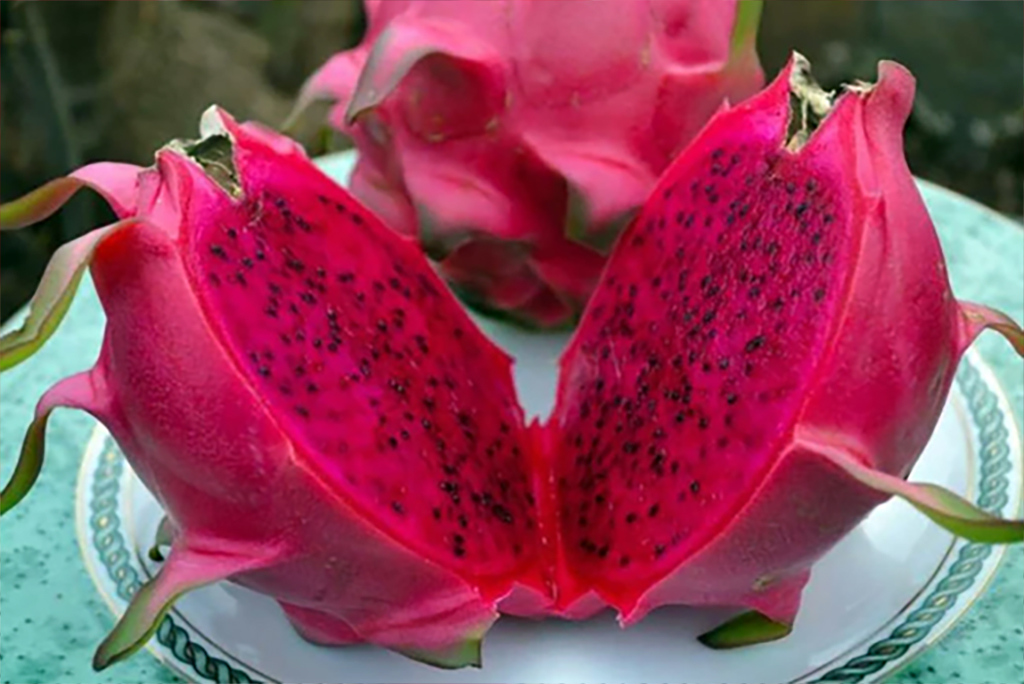In this article, we delve into the realm of integrated pest management (IPM) for dragon fruit plants, exploring effective strategies to ensure a thriving orchard. Dragon fruit, scientifically known as Hylocereus undatus, is an exotic and visually captivating fruit that has gained popularity in horticulture. Cultivating this intriguing plant, however, comes with its own set of challenges, mainly revolving around pests and diseases.
Table of Contents
Integrated Pest Management
IPM is a holistic approach that integrates various techniques to manage pests while minimising environmental impact. When applied to dragon fruit cultivation, this method proves invaluable in maintaining plant health and optimising yield. Let’s explore the key components of an effective IPM for dragon fruit plant strategy.

1. Cultural Practices:
Cultural practices form the bedrock of any successful IPM programme. Begin by selecting suitable cultivars and planting in well-drained, sandy soils. Adequate spacing between plants promotes air circulation, reducing the risk of fungal diseases. Implementing a crop rotation strategy prevents the buildup of specific pests and diseases associated with continuous dragon fruit cultivation.
2. Biological Control:
Harnessing the power of nature, biological control involves introducing natural enemies to regulate pest populations. Predatory insects such as ladybugs and lacewings can be instrumental in controlling common dragon fruit pests like aphids and scale insects. Additionally, deploying beneficial nematodes in the soil helps combat soil-borne pathogens.
3. Chemical Control:
While chemical control is often a last resort, it remains an integral component of IPM. Targeted application of pesticides, preferably organic ones, can effectively manage specific pest infestations without causing harm to beneficial organisms or the environment. Always adhere to the recommended dosage and application timings.
4. Monitoring and Early Detection:
Regular monitoring of dragon fruit plants is crucial for early detection of pests and diseases. Implementing sticky traps and visually inspecting plants for signs of infestation allow for timely intervention. Early detection facilitates a more targeted and less intensive response, minimising the need for extensive chemical treatments.
5. Cultural Control Measures:
Employing cultural control measures involves manipulating the environment to discourage pests. Mulching, for instance, helps retain soil moisture while creating an unfavourable habitat for certain pests. Adjusting irrigation practices to avoid waterlogged conditions is vital in preventing root diseases.
6. Quarantine Measures:
Preventing the introduction of pests and diseases is equally important. Establishing a quarantine area for new plants before integrating them into the main orchard helps identify and address potential issues before they spread. This proactive approach safeguards the entire dragon fruit cultivation system.
Common Pests Affecting Dragon Fruit Plants and IPM Strategies

1. Aphids:
Aphids, those diminutive yet destructive pests, can wreak havoc on dragon fruit plants by sucking sap and transmitting viruses. Combat these invaders by releasing natural predators or using insecticidal soaps.
2. Scale Insects:
Scale insects are notorious for their ability to compromise plant health. Encourage natural enemies like parasitic wasps to control large populations. Pruning infested branches can also help manage their numbers.
3. Spider Mites:
These minuscule arachnids can cause significant damage by piercing plant cells and sucking out the contents. Mitigate the impact of spider mites by regularly spraying plants with water to reduce dust and applying neem oil.
4. Fungal Diseases:
Fungal diseases such as anthracnose and stem rot pose a threat to dragon fruit plants, particularly in humid conditions. Cultural practices like proper spacing and adequate ventilation prove effective, along with targeted fungicide applications when necessary.
Future Perspectives on IPM for Dragon Fruit Cultivation

As we progress into a more sustainable era of agriculture, the emphasis on eco-friendly pest management practices becomes paramount. The future of IPM for dragon fruit plants lies in the continued development of novel technologies and strategies.
1. Biotechnological Innovations:
Advancements in biotechnology offer promising solutions, from the development of pest-resistant dragon fruit varieties to the exploration of biopesticides derived from naturally occurring microorganisms.
2. Precision Agriculture:
The integration of precision agriculture techniques, such as remote sensing and data analytics, enables farmers to monitor and manage their orchards with unprecedented accuracy. This not only enhances pest detection but also optimises resource utilisation.
3. Community Collaboration:
Fostering collaboration within the farming community allows for the exchange of knowledge and experiences. Shared insights on successful IPM practices create a supportive network, enhancing the collective ability to combat emerging challenges.
In conclusion, IPM for dragon fruit plants is a multifaceted approach that goes beyond conventional pest control methods. By embracing a combination of cultural, biological, and chemical strategies, farmers can safeguard their orchards while promoting sustainability. The ongoing evolution of pest management techniques ensures that dragon fruit cultivation remains a thriving and resilient agricultural pursuit.
